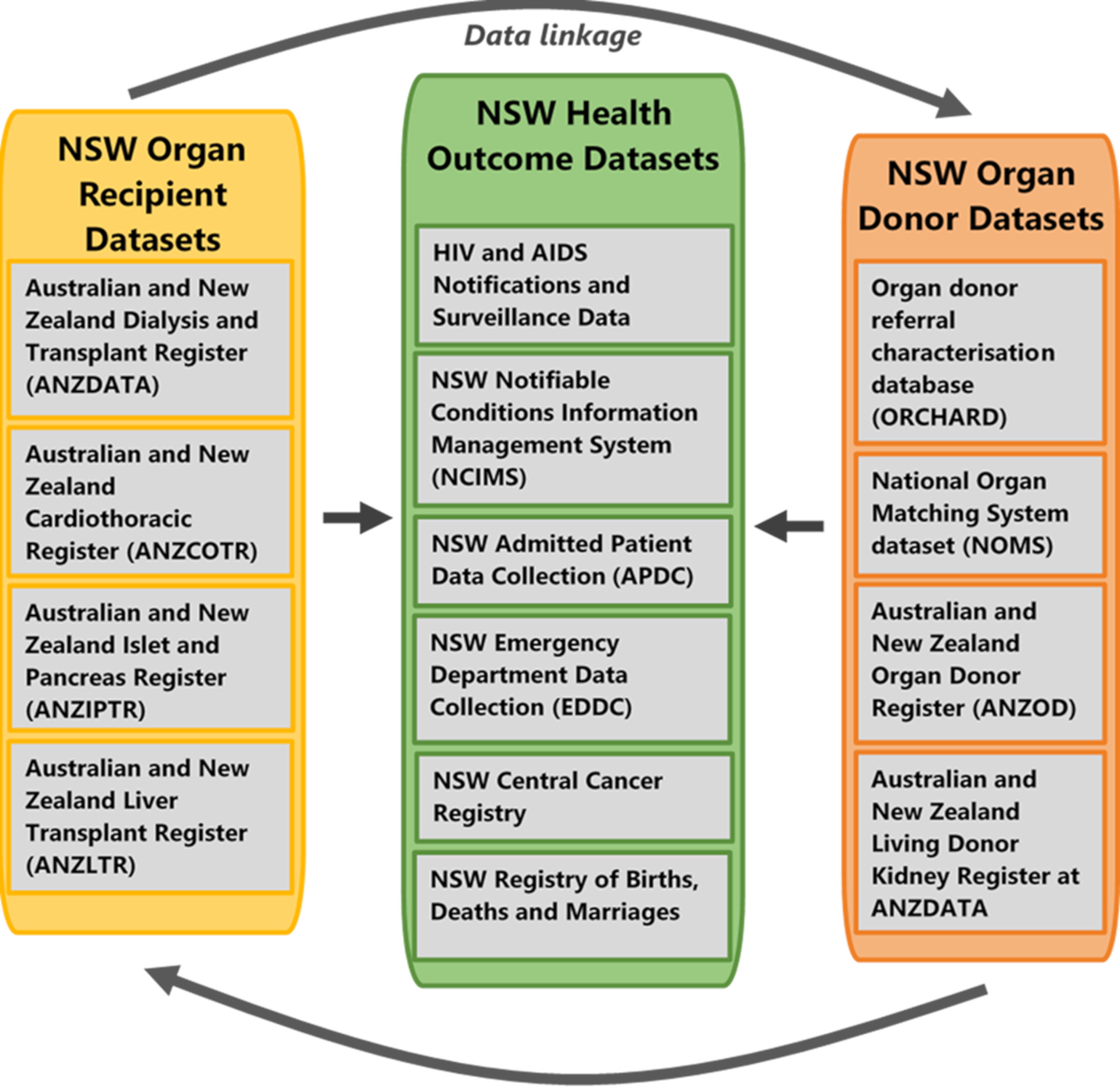Verification of suspected melanomas in deceased organ donor referrals: A population-based cohort study using data-linkage, 2010-2015
Brenda Marie Rosales1,3, James Hedley1, Karen Waller1, Nicole De La Mata1, Elena Cavazzoni4, Michael O'Leary4, Patrick Kelly1, Kate Wyburn1,3, Angela C. Webster1,2.
1Sydney School of Public Health, The University of Sydney, Sydney, Australia; 2Department of Renal Medicine and Transplantation, Westmead Hospital, Sydney, Australia; 3Department of Renal Medicine and Transplantation, Royal Prince Alfred Hospital, Sydney, Australia; 4Organ Tissue and Donation Service, NSW Health, Sydney, Australia
The Safety and Biovigilance in Organ Donation (SAFEBOD) Study Group. The Centre for Organ Donation Evidence (CODE).
Introduction: Deceased donor assessment is time-sensitive and medical history often relies on imperfect information by proxy. Misclassification of skin cancers at referral may lead to missed opportunities in organ donation. We sought to compare melanoma history suspected at referral with cancer registry records.
Materials and Methods: For all deceased-donor referrals in New South Wales (NSW), Australia, 2010-2015, we linked Organ and Tissue Donation Service (OTDS) logs with the Central Cancer Registry (CCR), which reported cancers diagnosed 1976-2013, including in-situ cancers (Figure 1). Data-linkage was part of a public health register established for the investigation of safety and biovigilance in solid organ donation and transplantation (SAFEBOD study). We compared suspected melanoma in OTDS referrals and melanoma in CCR. Melanoma was defined as C43 cancers using ICD-10-AM topography code or invasive unspecified malignant skin cancers with melanoma in histology (C44; M-872—M-879) using ICD-O-3 topography and morphology codes. We estimated the sensitivity and specificity of referral logs, the positive- and negative-predictive values for this population and, cross-tabulated against donation outcomes.

Results and Discussion: Of 2, 974 referrals, 25(<1%) were suspected of melanoma. Of these, 8/25 (32%) were classified as melanomas in CCR and confirmed with histology. None of these referrals proceeded to donation. Seventeen (68%) of the 25 suspected melanomas had no matching CCR record. Of these, 12/17 were declined for melanoma risk alone but could have safely donated. Additionally,13/2,974 referrals had verified melanomas not known by OTDS. Of these, 2/13 donated at least 1 solid organ and 11/13 did not donate (Figure 2). Overall, OTDS referral logs had poor sensitivity (38%) and positive predictive value (32%) for melanoma but high specificity (99%) and negative predictive value (99%).

Conclusions: Cancer topography and histology results at time of donor referral would improve the cancer risk classification and potentially identify more opportunities for donation. These results support the move to real-time linkage of donor referrals to cancer records.
Office of the Chair, New South Wales MInistry of Health. Australian and New Zealand Dialysis and Transplantat Registry (ANZDATA). NSW Organ and Tissue Donation Service (OTDS). Centre for Health Record Linkage ( CHeReL ) . NSW Cancer Registry (NSWCR).
There are no comments yet...